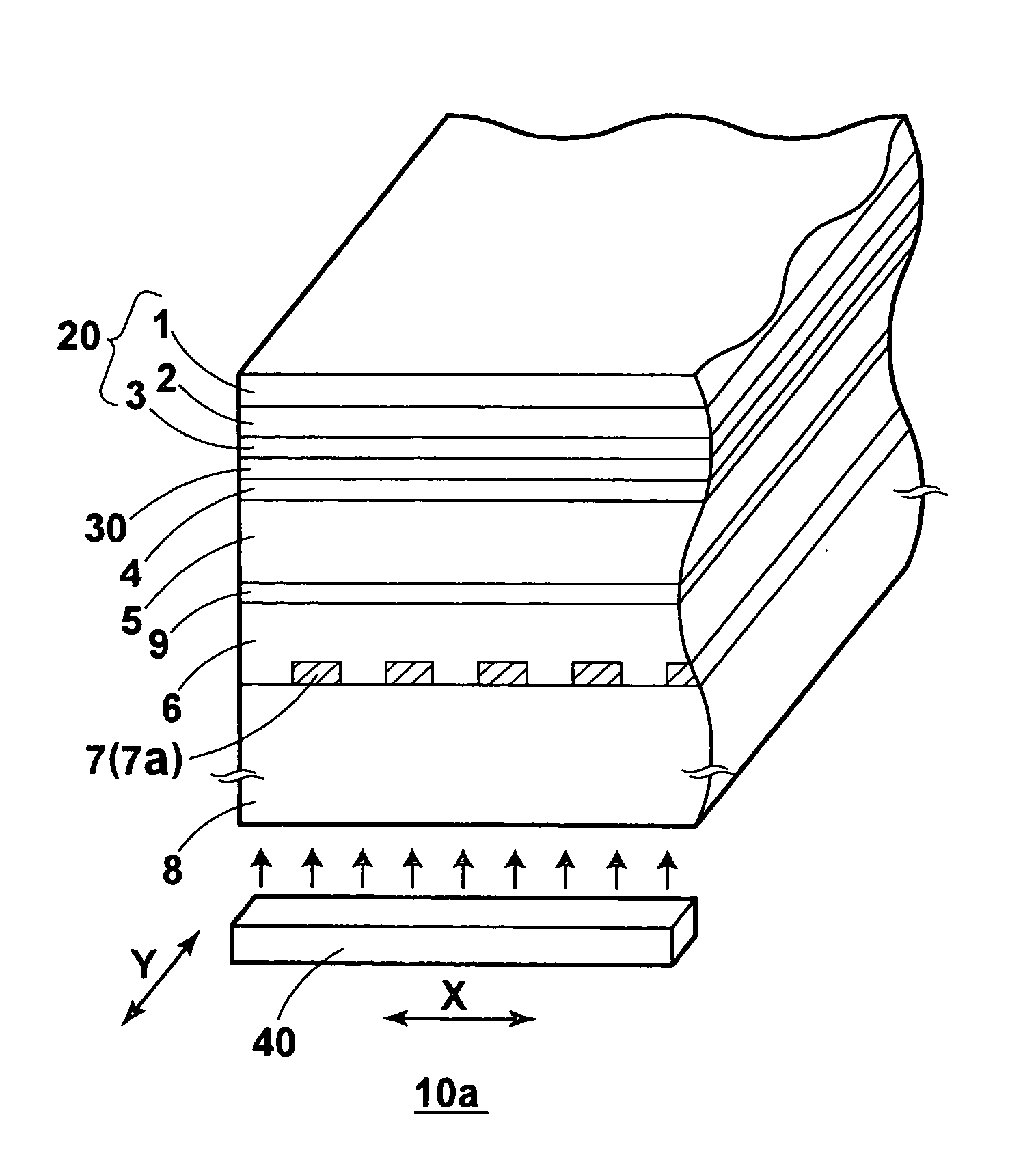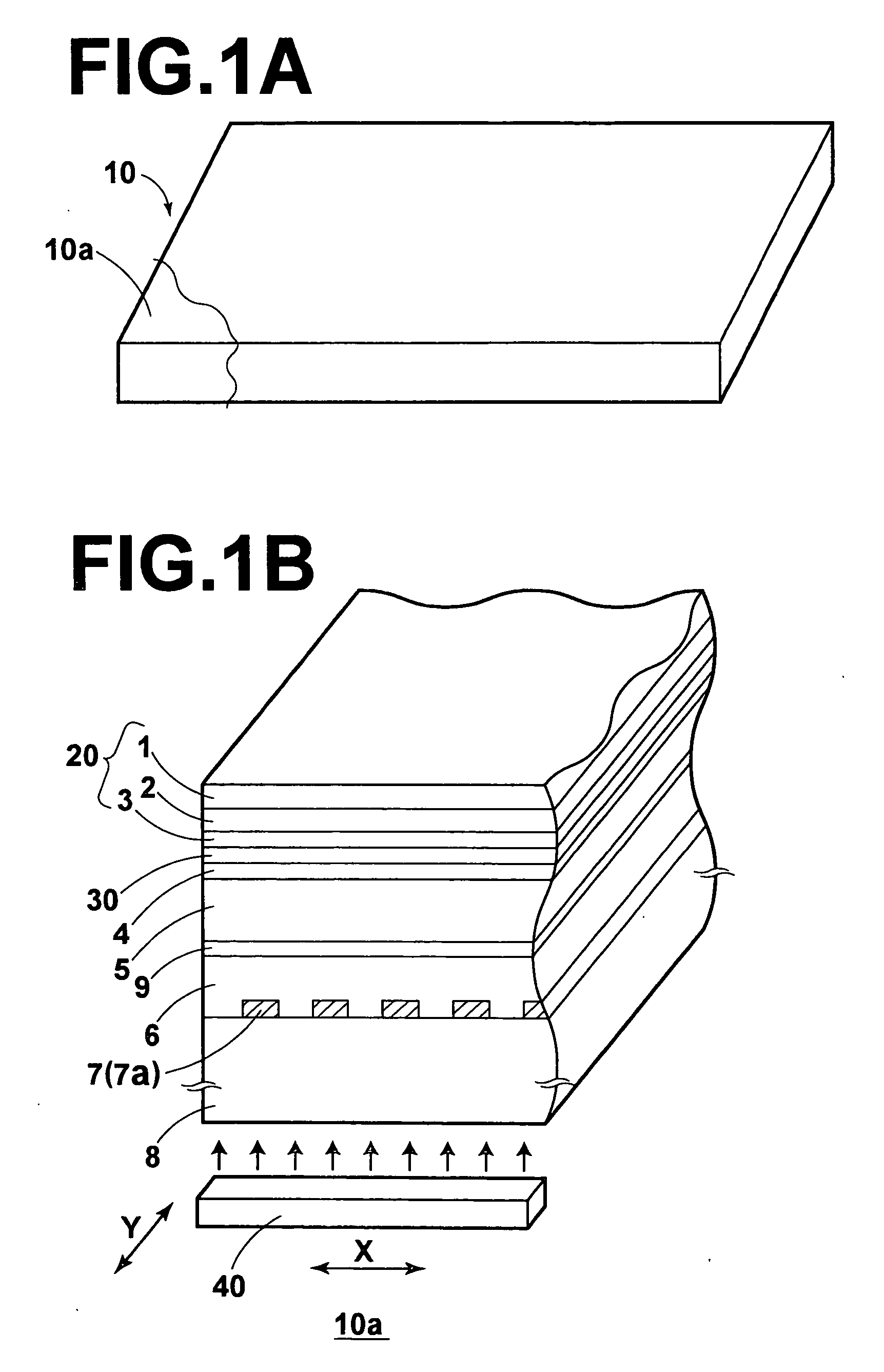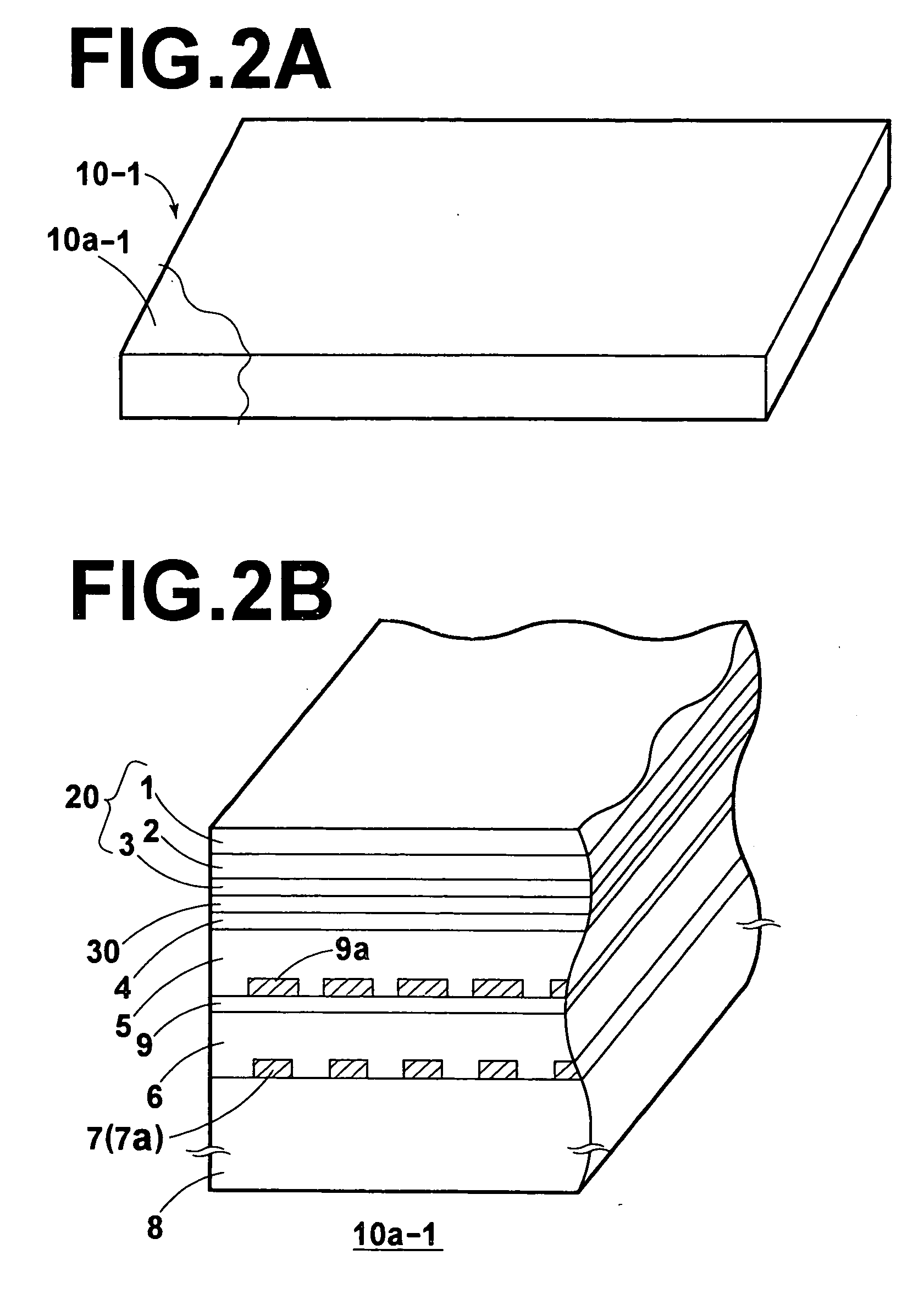Radiographic-image recording medium containing shock-resistant member
a technology of radio-image and recording medium, which is applied in the direction of material analysis using wave/particle radiation, instruments, television systems, etc., can solve the problems of glass substrates also breaking easily upon impact, a-se films having such a thickness are susceptible to damage, and wavelength conversion layers per se are very susceptible to damag
- Summary
- Abstract
- Description
- Claims
- Application Information
AI Technical Summary
Benefits of technology
Problems solved by technology
Method used
Image
Examples
first embodiment
[0055] FIG. 1A is a perspective view of a radiographic-image recording medium according to the first embodiment of the present invention, and FIG. 1B is a magnified perspective view of a cutaway portion 10a of the radiographic-image recording medium 10 of FIG. 1A, where a cross section of the cutaway portion 10a is illustrated in FIG. 1B.
[0056] The radiographic-image recording medium 10 illustrated in FIGS. 1A and 1B comprises a fluorescent layer 20, a first electrode layer 4, a recording-side photoconductive layer 5, a reading-side photoconductive layer 6, a second electrode layer 7, and a substrate 8 are arranged in this order. In addition, a charge storage region 9 is formed at the interface between the recording-side photoconductive layer 5 and the reading-side photoconductive layer 6.
[0057] The fluorescent layer 20 contains a fluorescent material which converts radiation for use in recording, into visible light. The first electrode layer 4 is transparent to the visible light wh...
second embodiment
[0073] FIG. 2A is a perspective view of a radiographic-image recording medium according to the second embodiment of the present invention, and FIG. 2B is a magnified perspective view of a cutaway portion 10a-1 of the radiographic-image recording medium 10-1 of FIG. 2A, where a cross section of the cutaway portion 10a-1 is illustrated in FIG. 2B.
[0074] The radiographic-image recording medium 10-1 according to the second embodiment is different from the radiographic-image recording medium 10 according to the first embodiment in that a plurality of microplates 9a are provided at the interface between the recording-side photoconductive layer 5 and the charge storage region 9 so that the plurality of microplates 9a are respectively located opposite to the plurality of elements 7a. For example, the material for the plurality of microplates 9a is formed on the charge storage region 9 by a vacuum evaporation or chemical deposit method. The plurality of microplates 9a can be realized by extr...
third embodiment
[0075] FIG. 3A is a perspective view of a radiographic-image recording medium according to the third embodiment of the present invention, and FIG. 3B is a magnified perspective view of a cutaway portion 10a-2 of the radiographic-image recording medium 10-2 of FIG. 3A, where a cross section of the cutaway portion 10a-2 is illustrated in FIG. 3B.
[0076] The radiographic-image recording medium 10-2 according to the third embodiment is different from the radiographic-image recording medium 10 according to the first embodiment in that the second electrode layer includes the first and second striped electrode arrays, where the first striped electrode array is comprised of a plurality of first elements (first linear electrodes) 17a which are formed with a pitch corresponding to a pixel pitch, and the second striped electrode array is comprised of a plurality of second elements (second linear electrodes) 17b which are arranged alternately with and almost parallel to the plurality of first el...
PUM
 Login to View More
Login to View More Abstract
Description
Claims
Application Information
 Login to View More
Login to View More - R&D
- Intellectual Property
- Life Sciences
- Materials
- Tech Scout
- Unparalleled Data Quality
- Higher Quality Content
- 60% Fewer Hallucinations
Browse by: Latest US Patents, China's latest patents, Technical Efficacy Thesaurus, Application Domain, Technology Topic, Popular Technical Reports.
© 2025 PatSnap. All rights reserved.Legal|Privacy policy|Modern Slavery Act Transparency Statement|Sitemap|About US| Contact US: help@patsnap.com



